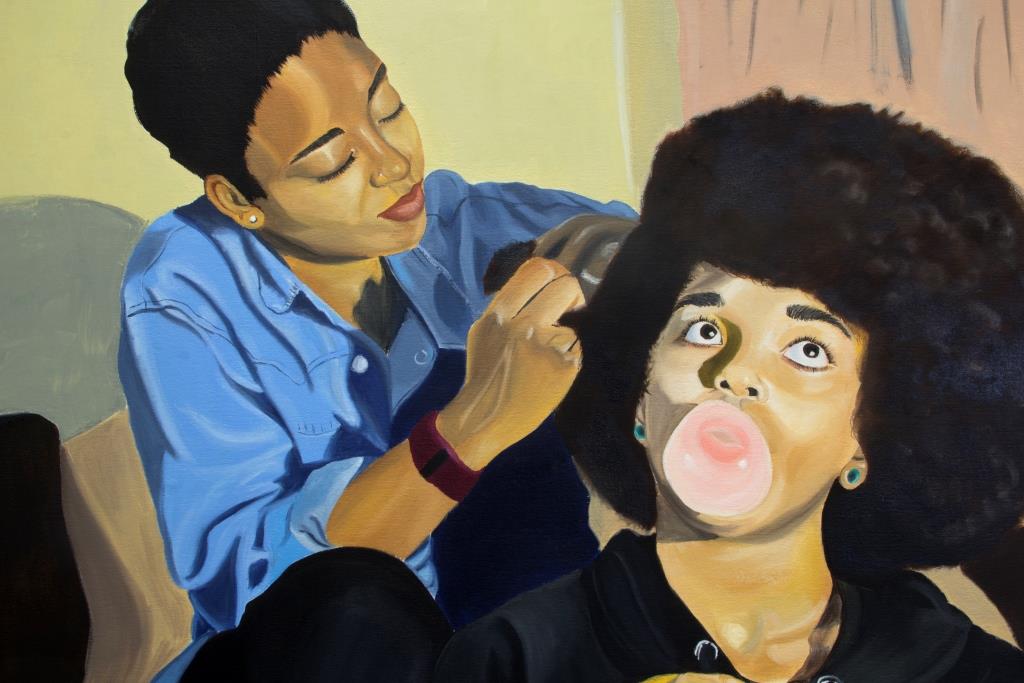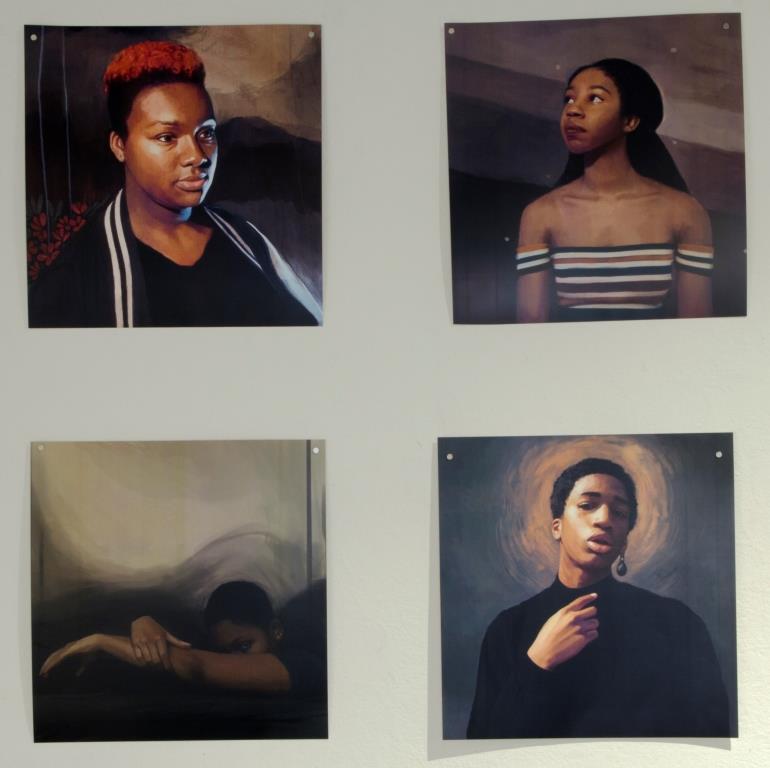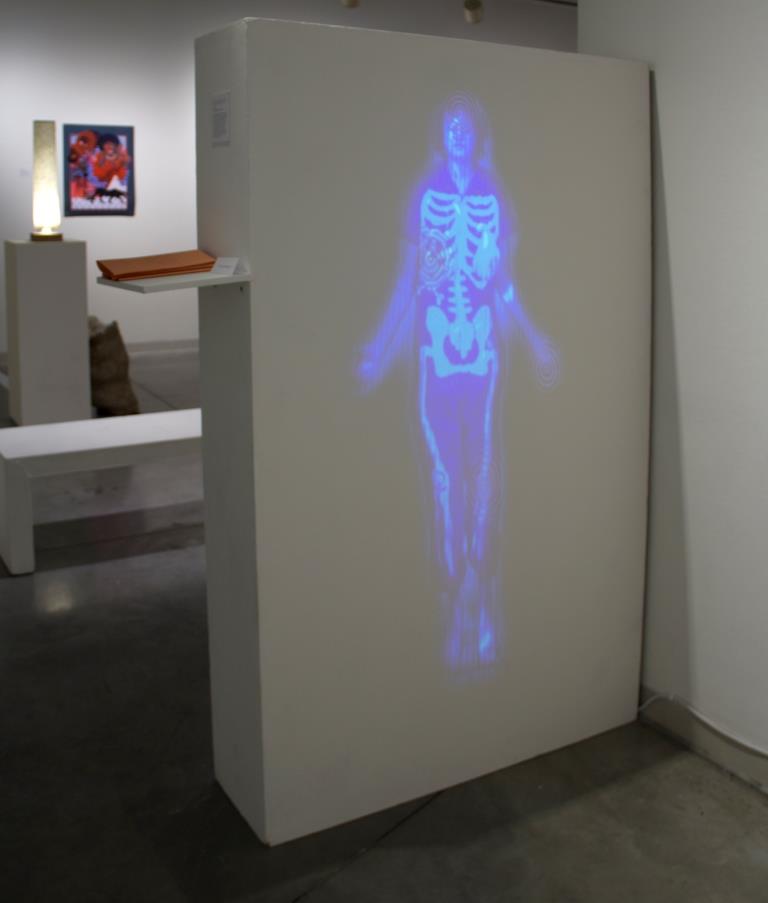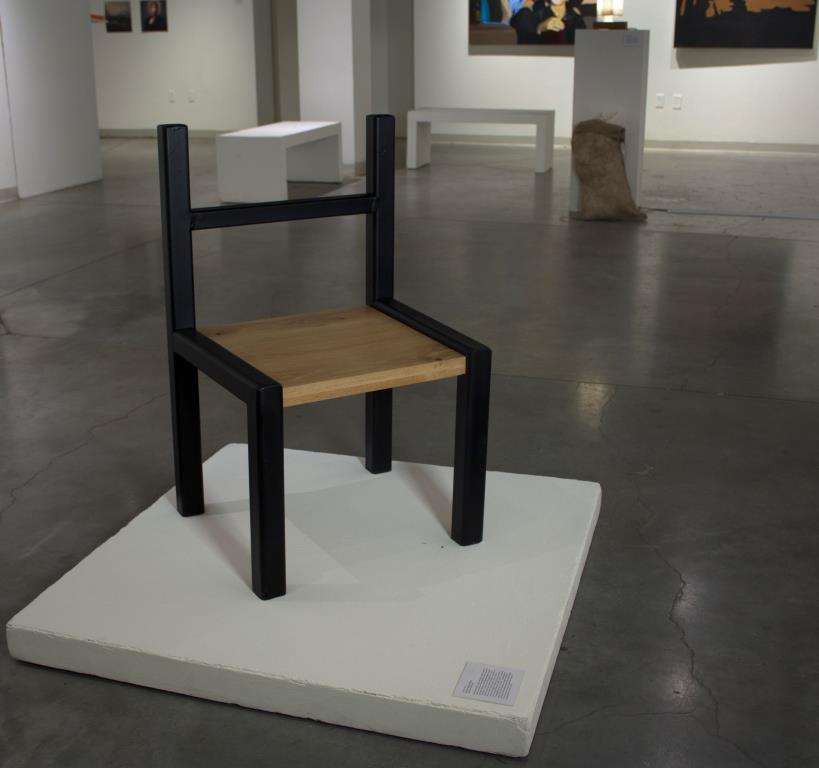What’s It Like to be a Young Black Artist in the Twin Cities?
Writer Lara Mimosa Montes sits down with emerging artists from MCAD's Black Artist Student Union, who presented the recent group show "Navigate," to talk about their experiences putting the exhibition together and, more generally, navigating the Twin Cities art scene as people of color.

introductionOn March 24th, 2017, Black Artist Student Union (BASU) celebrated the opening for their group show, Navigate, at the Minneapolis College of Art and Design’s Gallery 148. A few days after the opening, I sat down with the artists, many of whom were former students of mine, and discussed their experiences putting together the show.
lara mimosa montesWhy Navigate, and why now?
candice davisNavigate refers to the daily challenges Black people face as we try to exist in a society that consistently devalues and disenfranchises us. These are struggles that often go unnoticed by the institution and that we felt needed to be recognized. It was important for us to show Black peers, inside and outside of the institution of MCAD, that they are not alone in their struggles, and that their voices are valid. It’s also important to give people space to understand that there are major discrepancies in the ease with which some people can exist; for all of the artists in the show, our Blackness is part of what informs those discrepancies. When we navigate the world as neurodivergent, as women, as LGBTQIA, as disabled people, all that also intersects with our navigation as Black people, because those different marginalized struggles are not mutually exclusive.
Noah Lawrence-HolderWe agreed upon Navigate, because it also reflects the uncertainty that many Black people struggle with. I think this is especially important in 2017, because of the current political climate in America. I know for a fact that a lot of us were deeply shaken to wake up with Trump in the White House. His presidency has normalized and even validated so much bigoted thinking that it is increasingly important for us to make our presence known.
James paul Palmer-wilsonWe had to represent where we come from and tell others who we are. We had to say, “Hey, we are here, and we as black individuals are about to make our voices heard.”

emma eubanksThat one word — navigate — describes how we as Black people are not allowed to simply exist. We have to actively navigate our world, academic or otherwise, with the constant weight of stereotypes/preconceived notions, respectability politics, and a knowledge of the history of what it means to be Black in this country. So many things have happened in recent history that affect the Black community in Minneapolis — like the murder of Philando Castile, for example — that seemed to not be understood by the majority of folks at the college. Navigate was a way for us to bring these issues straight into MCAD, rather than letting the school continue to exist as a sort of fortress that for the most part, keeps knowledge and understanding of Black issues out.
Taylan DeJohnetteNavigate ended up being the most suitable title for the show, because it allowed us to experience zero restraints on what we could talk about when referring to the Black community. The title was partially a response to the experiences of being Black artists in a primarily white environment, where both teachers and students aren’t always excited to see racially-driven work.
Kehayr BrownI also think that many of our white peers who are creating art at MCAD come from places where they’ve never had to concern themselves with the non-white communities around them. That can cause some major problems, if you’re a young artist of color expecting some useful feedback during a critique, for example.
Ashley koudouWhen I first started going to BASU meetings I really wanted to connect with more Black people within a space where I could comfortably express my concerns among those who could understand where I was coming from. I was excited by the idea of putting together a show like Navigate, because I thought it would be a great way to promote ourselves as artists and show people what BASU artists can do. And, really, anytime is a good time to feature Black artists — not just Black History Month. We saw an opportunity and took it.
Black work is inherently radical or political, just by the sheer fact that a Black person is making it. Your choice not to make work about being Black is just as important as making work about being Black.
lara mimosa montesWhat concerns did you encounter in making and selecting work for the show?
TAYLAN DEJOHNETTEConcerns that I came across when making work for such a racially driven show were whether or not to dumb down my piece for non-Black audiences or to keep it as raw as possible.
NOAH LAWRENCE-HOLDERPutting on a show as a collective of Black students can make you very uncertain. You don’t know how people are going to react. It’s easy to hope for people to really try and glean some meaning from your work, but that’s not always the case. Not everyone is that receptive. There will always be someone who tries to undermine your hard work by telling you your success comes from “playing the race card.” I think making ourselves vulnerable in this way was a very big challenge to overcome.
emma eubanksMy concern for my piece, which depicts Black youth at a party, was that I would give off the impression that I didn’t care about, or couldn’t grasp the reality of the Black experience. I think one connotation that comes with “Black art” is that it needs to reflect some sort of pain or sad truth about our community; I felt really conflicted presenting a piece that portrays Black kids being unbothered by anything. I didn’t want to give off the impression that I thought there were no problems affecting the Black community. I also felt guilty for worrying about submitting a celebratory piece, because a vital part of the Black experience is finding love for yourself and community. I believe that Black audiences picked up on this, that Black joy is political, whereas I think white audiences, when they looked at my work, just saw some Black kids dancing.

candice davisIt can be intimidating to put on a show comprised only of Black artists in an institution like MCAD, which is predominately white, because the narratives you present end up being interpreted as universal in the Black community. Similarly, there is an inherent fear that if your Black Artist Exhibition is unsuccessful, it reflects poorly on the entire Black community.
ashley koudouI was worried that my flag piece, Akloleko, wouldn’t be done on time, because it was something that was in its planning stages for a very long time. The piece is in response to the artist Frédéric Bruly Bouabré, an Ivorian artist who created an alphabet for his people, the Bété people of Ivory Coast. There is no written language for Bété people, so he created the alphabet for his people to use to keep the language alive.
kehayr brownIn the selecting and making of the work, I found myself most concerned with the explanation and critique of the work. Being one of two Black students in the furniture program, I often feel the need to edit what my piece is about for the purpose of critique. I felt anxious about having to defend the choices that I made, and risking not getting a meaningful critique if my classmates were afraid of saying something that could be seen as “culturally insensitive.” But Navigate gave me the space and comfort to say, “Hey, white history isn’t the only history; here’s mine, which is also valid.”
When someone who hasn’t experienced racism firsthand sees work like this, they may find it off-putting. Perhaps it is “too personal,” “too dramatic,” or “too negative” for them to digest.
lara mimosa montesDid you have any hopes or expectations as far as how people would react to the show?
James paul Palmer-wilsonI did not expect so many people to fill up the place like they did. It got hot fast.
maria robinsonI was also surprised at the turnout of the opening, and specifically, how many students came. Sometimes, in critiques, people don’t show interest in the work I or my peers make when it is about race or identity; people don’t seem attentive, or they don’t want to ask questions about the pieces, either because they’re nervous about saying something wrong or genuinely have no interest. Sometimes it’s hard to tell. So, when I saw the waves of people come in, it seemed like they were interested in what we had to present, like people were really seeing us for the first time. And it felt good.
ashley koudouThe night of the show was very exciting, but I was also really nervous, for many reasons. Like, would my friends and family show up? And what would they think? I also expected white people to not completely understand my work, because it was so influenced by my West African culture. But, in reality, it was Black Americans who had questions about my pieces. It made me remember that, just because we all identify as Black, it doesn’t mean we understand everything about each other’s respective cultures.

Noah Lawrence-HolderI had hoped that our show would spark discussion among its viewers. However, I found that not to be the case. Maybe this [lack of] response has to do with the nature of the show. When someone who hasn’t experienced racism firsthand sees work like this, they may find it off-putting. Perhaps it is “too personal,” “too dramatic,” or “too negative” for them to digest. We did have a student who complained that we only got the show because of our race, which I found very insulting. It hurts when people assume the only way you’ve succeeded is by playing the system somehow.
Taylan DeJohnetteI was hoping visitors would ask questions, specifically, about the message of the work, but viewers tended to be more interested in discussing the colors, rather than the content or politics of a piece. It’s important for our audiences to know that we are are artists, and that, yes, we are aesthetically trained on how to make something look visually pleasing. But can we, as artists and audience, also stir up an intellectual discussion about how and why a certain message is being conveyed? At the opening, everyone seemed to be avoiding any discussions about race.
candice davisBecause a lot of us expected the audience for this exhibition to be primarily non-Black, we were faced with challenges about whether or not we would be misinterpreted, or become a spectacle. It can be unsettling to have so many non-Black people scrutinizing Black work or participating in performative allyship by attending your show and telling you how “powerful” they think it is. It’s hard for Black artists to understand when things are being said or done to them from a place of legitimacy, or from racial bias or even guilt.
lara mimosa montesWhat are some of the challenges of being a young Black artist in the Twin Cities?
kehayr brownThe amount of visibility and lack of community in white spaces and institutions make it especially difficult.
emma eubanksI was born and raised in the Twin Cities, and I think this is a great place to be for a young Black artist. There’s so many Black youth creating and sharing their art daily, mostly on social media. My biggest difficulty lies in being a young Black artist WITHIN MCAD. The second I step off the college campus, my life becomes much more diverse; I feel more creatively inspired and free doing something normal, like riding the bus around the city, than I do within the college’s walls. It’s crazy to me that you can walk past signs advertising WIC and EBT, or bus past diverse neighborhoods and people, and then, within minutes, be at a school that is primarily white and very closed off to the realities of the issues people of color face in the Twin Cities. So, my biggest difficulty right now, as a Black artist in the cities, is feeling like I no longer have an authentic voice, or have the right to relate to or speak on issues that affect my community, because I now spend most of my time operating in an environment that doesn’t care about or reflect those issues.
Taylan DeJohnetteI’ve never had such a large number of non-POC people viewing my art, until I started making art here. Moving from California to the Twin Cities was a substantial change for me. That jump from a diverse area to a predominantly white place caused my art also to make that jump. It’s been challenging.
James paul Palmer-wilson: A lot of the art scene here is primarily white-dominated. I went to a local furniture design store for an event one of my teachers recommended, but when I got there, I felt overlooked because of my skin tone. Even when I was trying to talk to the other Black employees at this event, they, too, turned me away. So, I left disappointed and upset. On the other hand, these kinds of incidents push me to work harder and to create work that stands out from the rest.

maria robinsonI agree with James, when he says that the art scene in the Twin Cities is predominantly white. The art institutions here that draw the biggest audiences, I feel like they try, but there’s still not enough representation of Black artists. One or two Black artists in a group exhibition is not enough. I also feel like accessibility is a big issue. When submitting art to different galleries, there is a fee you have to pay. I try to avoid the galleries where I have to pay to submit my art, because I personally don’t have the funds to do so.
Candice DavisI think that, as a Black artist who discusses Blackness in my work, non-Black viewers tend to be either ignorant of or in opposition to my discussion of race, or they commend everything I do, because I’m Black, and they want to make sure I know they’re an ally. It is hard to recognize what is or isn’t genuine praise or critique.
ashley koudouI guess the most difficult part about being a Black artist is having to explain why you “always” or “only” make Black art. I sometimes fear that people are being judgmental of me as an artist for touching on a subject they can’t always relate to. The fact that I even have these fears, about having to talk about something else in my work, shows that there’s a problem.
lara mimosa montesWhat advice would you give aspiring young Black artists?
candice davisBlack work is inherently radical or political, just by the sheer fact that a Black person is making it. You don’t have to make work about being Black to be a Black artist; your choice not to make work about being Black is just as important as making work about being Black.
maria robinsonDon’t be intimidated or scared to make art you think white people won’t understand. Your experience is possibly the next Black person’s experience, and your art serves as a voice to other Black people all over.
Taylan DeJohnetteBe brave, be bold, be hungry. Be as unapologetic as possible.
James paul Palmer-wilsonAlways be yourself.
emma eubanksFind a network of other Black artists.
Navigate, an exhibition led by MCAD’s Black Artist Student Union, was on view in Gallery 148 at Minneapolis College of Art and Design from March 20 – March 31, 2017.